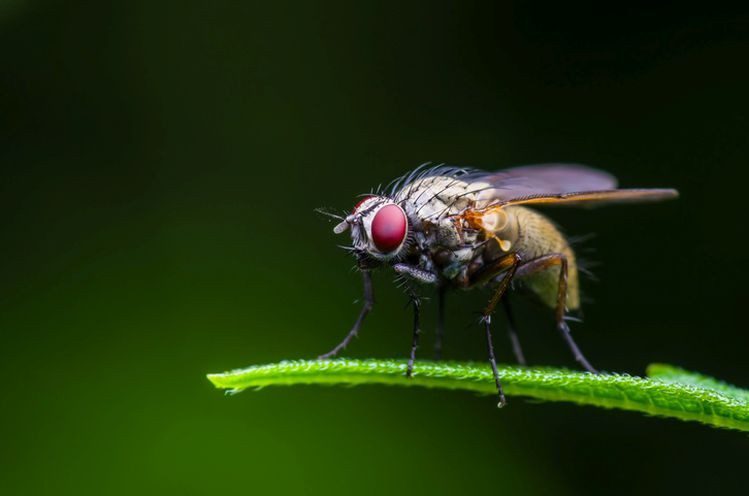Plant-based meats have revolutionized the food industry, offering a compelling alternative to traditional meat consumption. Now, with the integration of artificial intelligence (AI), this innovation is reaching new heights. Engineers at Stanford University are pioneering a unique approach that combines culinary expertise with cutting-edge AI to mimic the taste, texture, and overall sensory experience of animal meat. This breakthrough has the potential to redefine our relationship with food, catering to the growing demand for sustainable and ethical dietary options.
The Role of Texture in the Plant-Based Meat Revolution
Why Texture Matters in Meat Substitutes
For many consumers, the experience of eating meat goes beyond taste. The texture—its chewiness, juiciness, and fibrous consistency—plays an integral role in how we perceive and enjoy it. In creating plant-based alternatives, replicating this complex texture is one of the greatest challenges. Without a convincing texture, even the most flavorful plant-based meats may fail to win over traditional meat lovers.
The quest for authenticity in texture is about more than culinary appeal; it’s a bridge to acceptance. Research has shown that consumers are more likely to adopt plant-based diets when the substitutes closely resemble real meat in both taste and texture. This realization has driven researchers to innovate and create products that feel just as satisfying as their animal-based counterparts.

The Challenges of Texture Replication
Plant-based meats often rely on ingredients such as pea protein, soy, or wheat gluten to mimic the structure of animal proteins. However, achieving the right texture has traditionally involved trial-and-error methods that can be time-consuming and inconsistent. Factors such as how the proteins bond, the moisture content, and the cooking process all influence the final texture of the product, making it a complex problem to solve.
Enter AI, which provides a systematic and data-driven approach to understanding and replicating these intricate dynamics. By analyzing patterns and refining recipes in real time, AI has become a game-changer in overcoming the hurdles associated with replicating meat textures.
Bridging the Gap Between Plant-Based and Traditional Meat
The work being done by Stanford engineers demonstrates how science can close the gap between plant-based and traditional meats. By focusing on texture, they aim to appeal not only to vegetarians and vegans but also to flexitarians and meat enthusiasts. This approach has the potential to make plant-based meats a universal choice, moving beyond niche markets and into mainstream dining.
The Power of AI in Perfecting Plant-Based Meat
AI and Machine Learning in Texture Design
Stanford researchers have developed a groundbreaking method using machine learning to refine the texture of plant-based meats. This involves mechanical testing that simulates chewing, measuring the softness, resistance, and overall mouthfeel of the product. AI then analyzes this data to predict how changes in ingredients and preparation methods will affect the texture.
This process enables rapid experimentation, allowing researchers to tweak formulations and achieve optimal results in a fraction of the time it would take using traditional methods. The use of AI in this context is akin to giving the culinary world a crystal ball, providing insights into how ingredients interact at a molecular level.
A Surprising Leap in Authenticity
One of the most exciting outcomes of this research is the ability to replicate the full spectrum of textures found in animal meats. Ellen Kuhl, the principal author of the study, noted her surprise at how close plant-based products have come to mimicking the intricate textures of meat. From the tenderness of a chicken breast to the marbled complexity of a steak, AI is making it possible to tailor textures to consumer preferences.
This level of authenticity could help convert skeptics who have hesitated to try plant-based options due to concerns about texture. It also opens the door to creating plant-based versions of more complex meat dishes that rely heavily on texture for their appeal.
Sustainability Meets Technology
The use of AI in plant-based meat production is not just about creating a better product; it’s also about sustainability. Traditional livestock farming is resource-intensive and a major contributor to greenhouse gas emissions. By offering a viable alternative that satisfies consumers’ expectations, AI-driven plant-based meats could significantly reduce reliance on animal farming, contributing to a more sustainable food system.

The Future of Food: Culinary Art Meets Artificial Intelligence
Redefining the Culinary Landscape
The collaboration between chefs, scientists, and AI engineers represents a new era in food innovation. By leveraging technology, culinary experts can push the boundaries of what is possible, creating products that are not only sustainable but also delicious and accessible. The Stanford team’s work highlights the potential of interdisciplinary approaches in solving some of the world’s most pressing challenges.
As AI becomes more integrated into food science, the potential for innovation is limitless. Imagine plant-based meats tailored to regional tastes, dietary restrictions, or even specific nutritional needs, all made possible by data-driven insights. This blend of art and technology is poised to transform the way we think about food production and consumption.
Addressing Global Challenges
The implications of AI-enhanced plant-based meats go far beyond culinary innovation. With the global population expected to reach 10 billion by 2050, the need for sustainable food solutions has never been more urgent. Traditional meat production simply cannot scale to meet this demand without devastating environmental consequences.
By creating alternatives that are both appealing and eco-friendly, AI-driven plant-based meats offer a path forward. They have the potential to alleviate pressure on natural resources, reduce greenhouse gas emissions, and provide nutritious food to communities around the world.
A Future Beyond Meat Substitutes
The success of AI in plant-based meats could pave the way for broader applications in food science. From dairy alternatives to lab-grown seafood, the possibilities are endless. As the technology evolves, it may even enable the creation of entirely new food categories that challenge traditional definitions of cuisine.
This is just the beginning of a broader movement towards innovation in food production. By embracing technology, we can address global food security, promote sustainability, and ensure that future generations have access to nutritious and delicious meals.

Conclusion: A New Era in Food Innovation
The evolution of plant-based meats, powered by artificial intelligence, marks a turning point in the way we produce and consume food. By addressing the critical challenge of texture, Stanford engineers have created a pathway for plant-based products to enter mainstream markets and win over even the most skeptical consumers.
This innovation is more than a culinary breakthrough—it’s a step towards a more sustainable, ethical, and inclusive food system. As AI continues to refine and expand our understanding of food science, the future of plant-based meats looks brighter than ever. Whether you’re a food enthusiast, an environmentalist, or simply someone looking for healthier alternatives, the fusion of culinary art and AI offers something for everyone.
The journey is just beginning, but one thing is clear: the marriage of technology and food is set to reshape our diets and redefine our relationship with the planet.









